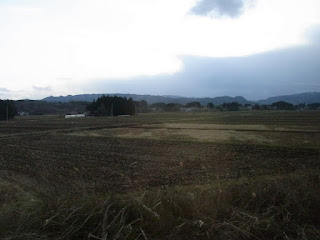For anyone with sufficient time, and an inclination to go to places off the Shinkansen lines, seishun 18 kippu is great. To a large extent the Shinkansen lines determine where the popular tourist sites are; it doesn't always follow though that these are the most worthwhile destinations. The seishun 18 kippu opens up places that are seriously off the beaten track relatively easily and very cheaply. The fact a single ticket can be used by multiple people makes it very flexible, not to mention that only walking would be cheaper: going to Odate via Niigata and returning on the shortest route would cost about 50,000 Y (around 550AUD), compared with 7,100 yen using three days of the seishun juu hachi ticket - and I could have done it in a two day trip (4,600Y)
Caveat and tips for successful and happy seishun travel.
* it may make for a happier trip to combine a seishun pass with shinkansen / night bus / plane travel., or for an overseas visitor combining it with a JR pass, especially if time is limited. The scenery from the train through the dormitory towns out of Tokyo tends not be inspiring. Having said that though - the more you travel in a day, the cheaper the per km rate of travel becomes.
* know when the seishun ju hachi kippu seasons are. The JR East website has the info.
http://www.jreast.co.jp/e/pass/seishun18.html
The tickets are not sold by JR for the last two weeks of the seishun period though they can be used. Discount ticket shops may have them though.
* reasearch the trains - some lines have only a few services a day. http://www.jorudan.co.jp/ has a function that restricts the search to seishun eligible trains. (It's only in Japanese but the google translate function is very satisfactory - there is an English search engine but you need to manually eliminate shinkansen, private lines etc from the search - it may be a little less reliable as there are some exceptions to travelling on express lines.) See the picture for what the itinerary looks like, I printed it in Japanese but have written in the English letters for the place names.
* a mobile ph. with internet capacity or a JR timetable will give the capacity to change the journey mid way through. (At Yamadera I got back to the station earlier than I anticipated and was able to re-search and a different route worked out to be faster). This applies particularly when there is more than one potential route. (scribbled jottings of the best connection.)
* if you have long stops, you can use your time better if you know what may be of interest at the stop over point.
* have a calm or stoic mind about long trips on a train. Motivated by frugality alone, I think it would be difficult to endure. I like trains and I like the Japanese countryside so it works fine for me - it's worth having a good book though.
* have a calm or stoic mind about long trips on a train. Motivated by frugality alone, I think it would be difficult to endure. I like trains and I like the Japanese countryside so it works fine for me - it's worth having a good book though.
* Be prepared for noone to speak English.
* unlike urban trains, they local trains in the countryside tend to have loos.
* And to restate the most important point - research and know your timetable - especially where there is more than one route option and especially if the services are infrequent.
* And to restate the most important point - research and know your timetable - especially where there is more than one route option and especially if the services are infrequent.
+ Not really a seishun 18 ticket tip, but it has lots of potential to combine it with bicycle riding. In Japan, the powers that be benevolently allow bagged bikes to travel free. :) But they must be bagged. At Yamadera the bike would have been a nuisance, but in Sakata, or Shinjo & Akita, with a bit more time, having a bike to explore on could make for really fun travel.
If I think of others I will write them :)
If you search seishun 18 on this site, you'll come up with my seishun 18 2011 trip.



















































